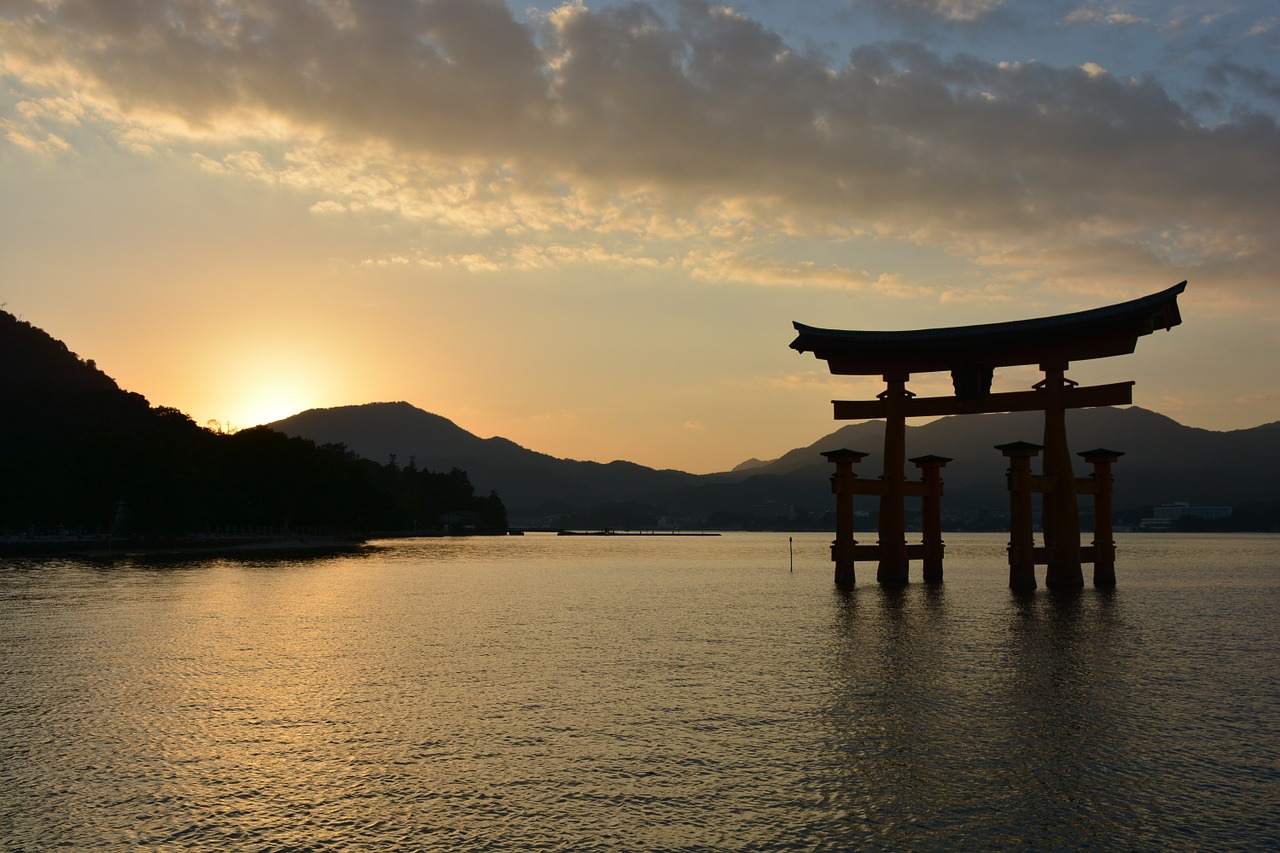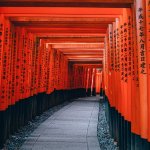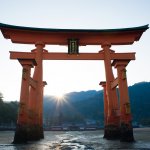Image: The famous floating torii gate at the Shinto shrine on Itsukushima Island, Japan.
It is Sunday, 6:30 AM, when I board the train to make it in time for the 7 AM Mass at the sole Catholic church in Yokkaichi, a port city on the East coast of Japan’s main island, where I have lived for 25 years. The population of 280,000 is a humble unassuming folk – five years behind the fashions of Nagoya (the nearest metropolis), and ten behind Hollywood (I wish it were 1,000). Every time I see the same cadre of teenagers on the train, dressed in the uniforms of whatever sport they are on their way to practice. In Japan there is a “way” for everything : from fencing to calligraphy to…..you name it, there is a “way” to do it. School students are expected to join one of the numerous clubs (not all of which are sports) wherein the virtues of teamwork, discipline, self-restraint, perfectionism, respect of authority and social hierarchy, are inculcated.

On the train I notice baseball uniforms with the emblem of Kaisei, the local Catholic high school, administered by priests of the School of Pious Fathers, the same order of missionaries who founded our parish 70 years ago. Although our patron saint is the Pious Fathers’ founder St. Joseph Calasanz, like most churches here, ours is simply named after the city, perhaps for easy identification in a country where only St. Francis Xavier is a household name. Catholic high schools and colleges are common and well respected. I have met quite a few alumni of these institutions in my time, but none yet who was converted by the experience. In fact in my public life I have only met two Japanese Catholics : one, already a parish member; the other, alas, a fallen away Catholic, similar to many his age, very few of whom marry Catholics and raise Catholic children. (I begged him to return……)
This brings me to the greatest crisis in the Japanese Church: marriage and family (Satan’s final battle, as Sister Lucia of Fatima warned). In all my years of Mass attendance here I can only recall perhaps two or three marriages. Baptisms, on the contrary, are nearly weekly, but all the children are South Americans (of various odd ages – why did the parents wait until the child was 14?), and I never see them at Mass. I should clarify that these Latinos have part Japanese ancestry — probably a great-great-grandfather who emigrated to Brazil when the Japanese government promoted such a move about a century ago. They married locals, and now their descendants are offered easy immigration status by Japan, where they come to work. Some of them were already married in Brazil, but then start up another “family” here. It appears that many of them baptize their children. But it appears that few of them are practicing the Faith.
Isolation and loneliness are bedrock facts of everyday life for a practicing Christian foreigner, in a society where only 1% is Christian (a little over half of which is Catholic). It is especially so for an American such as I am, since Latin American and Filipino people make up nearly all of the foreign Catholic population.
The vocations shortage is particularly acute in Japan — bishops attribute it to the arduous focus young people put into education and career advancement in an increasingly secular culture. I have only had the pleasure to assist at a Mass offered by native clergy on a few occasions. I observed with awe the solemn, almost Stoic seriousness of these priests, and consider myself blessed and lucky to witness how the no-nonsense, by-the-books ethos of this culture has rubbed off on the foreign missionaries who make up the bulk of the parish priesthood. They deviate not one iota from the rubrics. The fact that they are offering in a second language definitely helps, and it makes a strong case for Latin liturgy. The Japanese faithful might not share this opinion since they have never been exposed to the enormity of liturgical abuses as other countries have.
Early on I noticed, as well, the accuracy of the translation in the Missal, which contains none of the errors that plagued the English translation for so long. This kind of perfectionism and stubborn resistance to change is a trait I admire deeply. Paradoxically, it should be said, however, that once an innovation has taken hold here, the people accept it with and almost aloof resignation that belies their prior reluctance. The psychology of membership in such an exclusive community, and perhaps fear of being further marginalized from the institutional Church than they already are, certainly play a part in making them (myself included) defensive of their solidarity, decidedly hesitant to rock the boat. Ours is a small community, and though the work is always voluntary, there is almost a cultural obligation to volunteer for the countless tasks that need doing. These factors also mean that for me — one of only a few men who attend Mass — anonymity, even in the confessional, is nearly impossible here.
The tiny number of conversions that result from the efforts of Japanese Catholicism is a sad reality. I often ponder the reasons. Is there any greater barrier to evangelization than disunity amongst the people who claim to follow Christ in a place still very unfamiliar with Him? A Mormon here; a Jehovah’s Witness there; an Evangelical singing hymns on a street corner. How can a Japanese person navigate through it? We Catholics commit ourselves to barely a fraction of the evangelization efforts these others do. I wonder if Catholic schools even teach the salvific imperative in Church dogma. To complicate matters, Oriental people seem to see religion not so much as a means of salvation, but rather more like a talisman: something to ward off misfortune or bring happiness and prosperity. It is a question of “What can it do for me?” But when people become as prosperous and successful as they have in modern times, supplication of the supernatural fades away and self-reliance increases. You can see it clearly by the decline even in the prominence of Shinto and Buddhist practice in daily Japanese life since World War II, and these religions are inextricably interwoven with the culture here.
Interestingly, the religions native to the region did not require a Vatican Council to bring about their decline.
Despite these challenges, I wonder if we are blessed here, inasmuch as we are free of the brutal cultural battles now being waged in the West between Christ and anti-Christ. We will be lucky if it does not catch us off guard in the future. How many of us would give up all worldly things, as did Justo Takayama Ukon, a persecuted Catholic samurai who died in exile in the Philippines? (He was beatified earlier this year).

I feel particular compassion for Japanese bishops and priests. It must be a daunting challenge for them to keep Catholics from discouragement and confusion, being so small a minority in a conformist society. Today’s crisis in the Church gives one pause for wonder if there will be any Mass, or priests to serve it in the future. That is perhaps best left to Divine Providence. But in the meantime I thank God for our priests, our nuns, our church, St. Joseph Calasanz, Our Lord’s Presence on the altar, and the many other blessings we maintain.
Our Lady of Akita — be the conversion of this poor nation.





